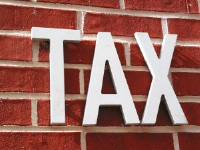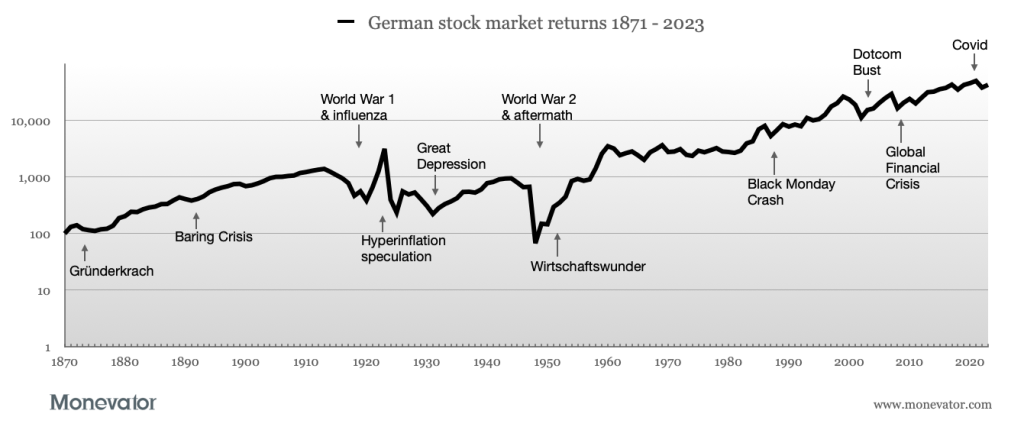
Another change as of the 2023 tax year for UK dividend tax. This time investors are being clobbered with a further reduction in the already miserly tax-free dividend allowance.
What are dividends?
Dividends are cash payouts made by companies:
You may be paid dividends by shares you own that are listed on the stock market.
You might also be paid dividends from your own limited company, as part of your remuneration.
Dividend tax only comes into the picture on dividends you receive outside of a tax shelter.
Using ISAs and pensions is key to shielding your income-generating assets from tax for the long-term.
The tax-free dividend allowance
As of 6 April 2023, the annual tax-free dividend allowance is reduced to £1,000. That’s down from £2,000 previously.
Dividends you receive within the tax-free dividend allowance are not taxed. But breach the allowance and the excess is taxed according to your income tax band.
Dividends received in ISAs and pensions are entirely ignored. They do not count towards your allowance.
Like other tax allowances such as the personal allowance for income tax, the dividend allowance runs over the tax year. (From 6 April to 5 April the next year).
The £1,000 dividend allowance means you will only automatically escape dividend tax on the first £1,000 of your dividend income. This level of dividend is tax-free, irrespective of how much non-dividend income you earn and your tax bracket.
Pretty stingy, but the situation will worsen again from April 2024. The annual dividend allowance is set to be reduced to just £500.
(You read somewhere about the old Dividend Tax Credit system? It was abolished years ago.)
Dividend tax rates for 2023-2024
The rate of tax you’ll pay on your dividends is determined by your income tax band.
UK dividend tax rates are:
Basic rate taxpayers: 8.25%
Higher-rate taxpayers: 33.75%
Additional rate taxpayers: 39.35%
Depending on your total earnings – and where it comes from – you could pay tax at more than one rate on your income.
These dividend tax rates went into effect on 6 April 2022. At that point the tax rate for each band was hiked by 1.25 percentage points.
A pledge to reverse the hike was made with the Mini Budget of 2022. But this in turn was scrapped by replacement chancellor Jeremy Hunt when he took office.
I hope you’re keeping notes at the back.
Note: remember, we’re talking about dividends you’re paid outside of tax shelters. Dividends paid within ISAs and pensions are ignored with respect to tax. Adding up your dividends to get the total for the year? Do not include dividends paid in ISAs or pensions! Forget about them for the purposes of tax. (Enjoy them for the purposes of getting rich.)
What tax rate will you pay on your UK dividends?
If your dividend income exceeds the tax-free dividend allowance, you’ll pay tax on the excess.
This liability must be declared and paid through your annual self-assessment tax return.
For example, if you received £6,000 in dividends, then tax is potentially charged on £5,000 of it. (£6,000 minus the £1,000 tax-free dividend allowance).
As we said, the rate you’ll pay depends on which tax bracket your dividend income falls into.
Beware of being bounced into a higher tax band
If you own dividend-paying shares outside of an ISA or pension then the dividends may add substantially to your total income. Perhaps enough to push you into a higher tax bracket!
To avoid taxes reducing your returns use ISAs or pensions wherever possible.
Watch out for withholding tax on dividends
If you’re paid dividends from overseas companies, you may be charged tax on them twice. Once by the tax authorities where the company is based, and again by Her Maj’s finest in the UK.
You may even pay this withholding tax on foreign dividends held within an ISA or pension.
However there are reciprocal tax treaties between the UK and other countries. These can at least reduce the total amount of dividend tax you pay.
Your broker should take care of this for you.
Also, some territories do not charge withholding tax on dividends received in a UK pension. The US is a notable one. (This doesn’t apply to ISAs. Choose where you hold US shares accordingly.)
Again, make sure your platform is paying you any US dividends in your pension without any tax having been charged.
It can all get a bit fiddly. See our article on withholding tax.
Why was the old dividend tax system changed?
Then-chancellor George Osborne revamped UK dividend taxation in the Summer Budget of 2015.
I believe he wanted to remove the incentive for people to set themselves up as Limited Companies simply to use dividends as a more tax-efficient way to get paid, compared to salaries.
Osborne also said the changes enabled him to reduce the rate of corporation tax.
But whatever his intentions, as we’ve seen today’s regime applies equally to dividends received from ordinary shares.
What’s more an initially fairly generous dividend allowance of £5,000 – designed to avoid small shareholders being taxed on their legacy dividend-paying portfolios – has been steadily whittled away.
Osborne’s problem with dividends
The old system of tax credits on dividends was designed roughly 50 years ago.
Corporation tax rates back then were above 50%. Add in personal taxation and some people saw the income earned by the companies they held taxed by 80% or more.1
Since those days, however, tax rates including corporation tax have fallen a lot. And the Dividend Tax Credit system that used to confuse everyone was a relic from those times, too.
So the government wanted to simplify things.
The good news was the confusing tax credit system got the chop.
The bad news was in practice higher rates of tax on dividends.
This threw a spanner into the works of some older people. They had based their portfolios (and their retirement plans) on how dividends were previously taxed.
Before 2016 the implicit ‘dividend allowance’ was as much as £31,786 if you earned no income from non-dividends above your personal allowance.
Some people saw their dividend tax bills soar
Most small investors were not hit by changes to dividend tax. The majority of us own shares within ISAs and pensions nowadays.
However there are exceptions.
Small business owners paid a dividend from their limited companies now pay more tax. Salary-sized dividends almost immediately chew through today’s puny dividend allowance. Any un-sheltered dividends paid from shares they own will also be taxed these days.
There also exists that dwindling cohort of older investors who built up a big portfolio of income shares outside of ISAs and pensions. They’re paying more tax, too.
Always use your tax shelters
For years I urged these people to move as much money as they could into ISAs. They could do this by defusing gains to fund their ISAs, for instance.
The ISA allowance is a use it or lose it affair. You must build up your total capacity over many years.
Yet inexplicably to me, some investors argued – even in the Monevator comments – that there was no point. Dividends were not taxed until you hit the higher rate band, they said. So why bother?
That was true in the old system. And maybe there was a harder choice to be made if you had massive cash savings. When interest rates were higher, there was more competition for your annual ISA allowance. (A dilemma that’s coming back again with interest on savings accounts back above 3%.)
But regardless, taxes on dividends were always liable to change. And eventually they did.
People who failed to build up ISAs – just to save a few quid – were hit with big tax bills.
I hate to say I told you so. (Truly! I write a blog to help people.)
ISA sheltering costs roughly nothing. There’s at most a trivial cost difference with an ISA versus a general account. Often none.
Get any non-sheltered portfolios into an ISA (and/or a SIPP) as soon as possible, if you can. Not just to avoid dividend tax, but also to shelter from capital gains taxes and other future regulatory changes.
Note: I’ve removed talk about the old way UK dividends were taxed in the comments to reduce confusion. We have to let go! But the discussion may still refer to old (or incorrect) dividend tax rates and allowances. Check the dates if unsure.
Remember, companies paying you a dividend have already paid corporation tax on their profits. That’s before anything is paid to you as a dividend.
The post UK dividend tax explained appeared first on Monevator.



